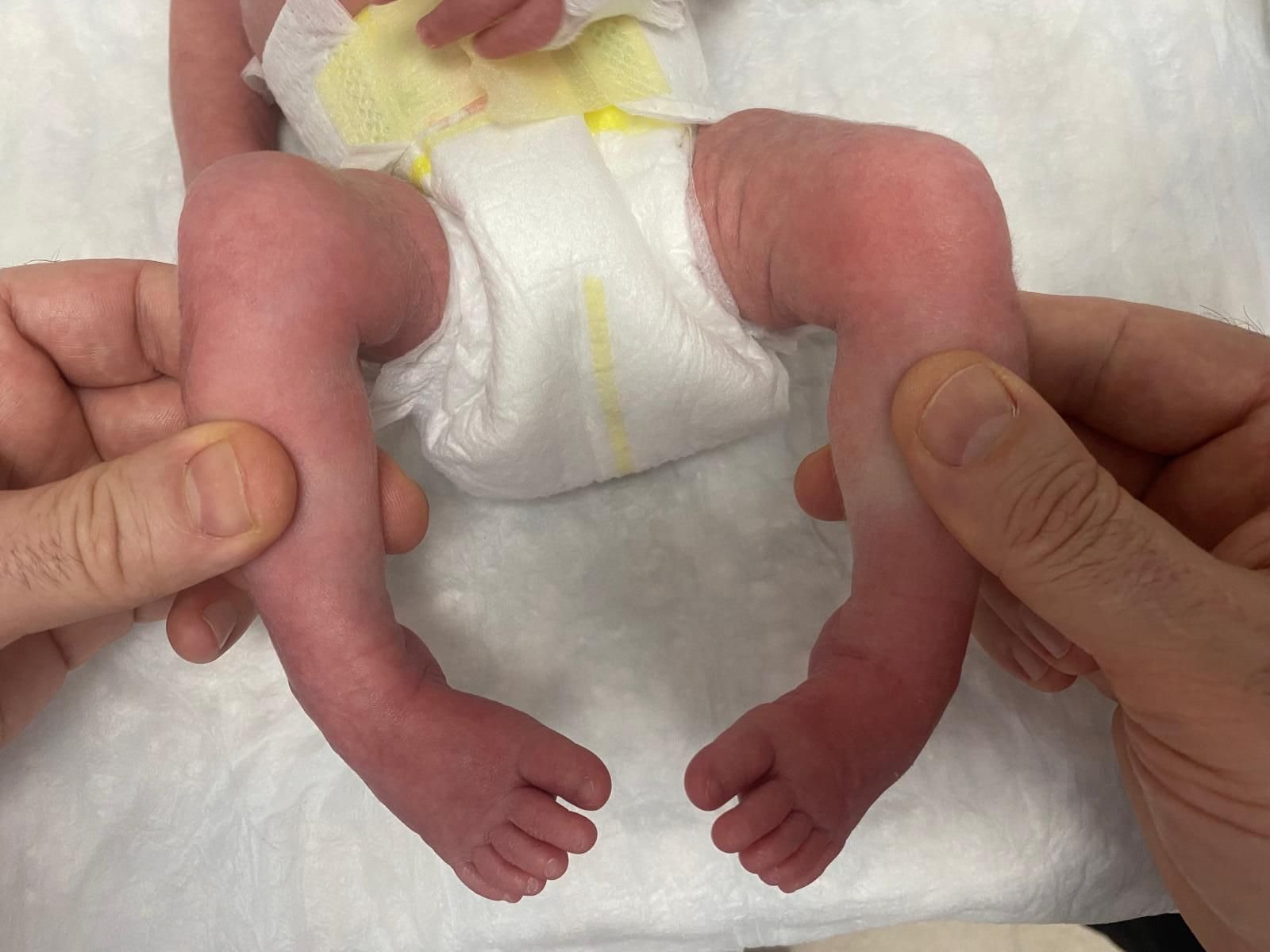Pes Equinovarus (Clubfoot) Treatment
The Ponseti Method, also known as serial casting, is the gold standard treatment for Pes Equinovarus (PEV), commonly known as clubfoot. This method has been proven to deliver highly successful outcomes in correcting this congenital foot deformity. The approach aims to gradually correct the foot bones and soft tissues, bringing them into the proper position. Below are the key points you need to know about the treatment process with the Ponseti Method and serial casting.
What is the Ponseti Method?
Developed by American pediatric orthopedic surgeon Dr. Ignacio V. Ponseti, the Ponseti Method is a technique used in treating PEV. It involves gradual correction of the foot using casts, aiming to limit the need for surgical intervention as much as possible, while bringing the foot into its anatomically correct position. The ultimate goal is to allow the child to walk normally in the future.
How is Serial Casting Applied?
The best results with the Ponseti Method are achieved when treatment begins in the first few weeks after birth. During the newborn period, the bones and joints are more flexible, making it easier to correct the foot position with casting.
In treatment, a pediatric orthopedic specialist applies gentle, corrective maneuvers to the baby’s foot each week, bringing the foot into the correct position before applying a cast. Each new cast aims to further improve the deformity.
The cast is changed every 7 days. The baby’s foot is examined by the doctor each week, progress is evaluated, and the new cast is applied to maintain the new position of the foot.
Depending on the severity of the foot deformity, a total of approximately 4 to 8 casts may be needed. In some cases, the number of casts may be slightly more or fewer.
Achilles Tendon Intervention (Tenotomy)
In most cases, the Ponseti Method corrects most of the foot deformity, but the equinus (downward) deformity of the heel may require lengthening of the Achilles tendon. This procedure is called tenotomy and is performed after all other foot deformities have been corrected but before the final cast is applied.
Tenotomy is a small, simple surgical procedure performed under general anesthesia.
After tenotomy, the foot is re-cast, and this final cast is kept on for 3 weeks.
What Happens After the Cast is Removed?
Once serial casting is completed and the foot has reached the desired position, the Ponseti Device is used to maintain the correction. This device is an apparatus that connects both feet with a bar and keeps the feet in the correct position.
Initially, it is recommended to wear the device for 23 hours a day. During follow-up visits every three months, the usage time is gradually reduced. By the time the child is around one year old, the device will be worn for approximately 12 hours a day. The child wears it during sleep and is encouraged to walk during waking hours to avoid delays in walking development.
The Ponseti device should be used until the child is approximately 4 years old.
Precautions During Treatment
- The baby’s cast should not get wet or damp, as this may cause skin irritation or infection. Protective measures should be taken during bath time to prevent liquid contact with the cast.
- If you notice unexpected discomfort, a bad odor coming from the cast, or redness or irritation on the skin, contact your doctor immediately.
- Correct usage of the Ponseti device, in the right position and at the recommended frequency, is crucial for the success of the treatment. It is important to follow your doctor’s instructions precisely.
- During the serial casting and bracing period, the baby’s normal daily care, feeding, and developmental activities (e.g., tummy time, appropriate exercises) should continue. The baby’s overall health directly impacts treatment success.
If your baby has been diagnosed with Pes Equinovarus or you have concerns about the condition, consult a pediatric orthopedic specialist for detailed information on treatment options and a personalized roadmap. Early intervention and proper treatment planning are the key to your baby having a healthy foot structure and an active life.
In conclusion, families who act with patience, awareness, and adherence to the doctor’s guidance significantly increase the success of the treatment.

